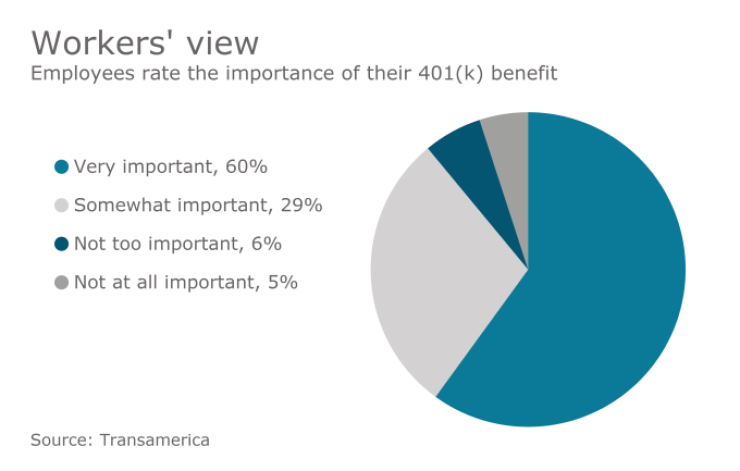In today’s 401(k) services market, where competitive forces and information technology-driven efficiencies have driven down costs, it might be easy to conclude that retirement plan administration and asset management have become a commodity business. But can plan sponsors really chose appropriate vendors with little more than a coin flip? Hardly.
While some criteria, such as the pricing of standard services, have diminished as a source of competitive advantage, other differentiators have come to the fore. That is particularly true when employers are not well-served by plain-vanilla plan designs, according to Kerry Boyce, founder and CEO of Boyce Pensions.
“There’s a perception that ‘this is what a 401(k) does’” when employers and even some advisers consider a standard plan design, Boyce says. But that’s not necessarily true, and some advisers and third-party administrators are too quick to recommend so-called safe harbor plans, he argues.

One problem with such plan designs, Boyce notes, is that top managers and other highly compensated employees (HCEs) miss out on the possibility of greater tax-deferred retirement savings. Another potential issue that safe-harbor plan costs might be higher than they otherwise would be.
To avoid this, plan administrators need to routinely assess whether the salary deferral patterns within a safe harbor plan would clear the ADP discrimination tests, if the plan were subject to them. They may find that the patterns have changed and a safe harbor plan design is no longer needed.
Also, safe harbor plans can add to plan costs because they require that matching contributions from the employer are vested immediately. If some of those contributions were forfeited prior to vesting, an employer with a relatively high employee turnover rate could use them to offset plan costs or to increase the employer match as an inducement for employees to remain with the company.
Boyce also cautions that “commoditized” plan administration services aren’t always alert to regulatory compliance pitfalls. For example, under ERISA’s stock ownership attribution rules, a family member of a significant shareholder — even one with a relatively low salary — is deemed a highly compensated employee and can cause the plan to fail the ADP test.
There are other, less well-known regulatory compliance tactics, such as using the “general testing” formula for discrimination testing, that administrators who stick to standard compliance procedures often fail to use.
Apart from technical expertise, some service providers and 401(k) recordkeepers offer more “hand-holding” to plan sponsors that others.
To the untrained eye, most basic recordkeeping services “look and smell the same,” says Jamie Greenleaf, lead adviser for the Cafaro Greenleaf retirement plan advisory service. But upon closer examination, notable distinctions appear.
When vetting prospective new recordkeepers, Greenleaf says it’s essential for the members of the front-line service team who interact with plan participants to attend the presentations. “Ask them ‘how many clients do you oversee?’” she says. “When they say, ‘150,’ the question becomes, ‘What about me?’”
Greenleaf also recommends that the sponsor check references for the individual members of the recordkeeper’s service team, and not just for the recordkeeper itself. This, she says, can yield important insights into the firm’s true capabilities.
Focus on the recordkeeper’s methods for engaging participants, she suggests. “You can have the best website in the world,” she says, “but if you can’t get employees to go on it, none of it matters.”
Yet another criterion for choosing a service provider is cybersecurity. “How will the provider protect the plan participants’ privacy,” Greenleaf encourages employers to ask.
Fees still matter
None of which is to say that fees no longer matter. “You still can’t take your eye off that ball,” says Joe Valletta, publisher of the annually updated 401k Averages Book. This, he adds, is especially true for the smallest plans, which are subject to the widest fee spread from plan vendors.
Often, the most important determinant of total plan costs (including asset management and administration) is not the overall size of the plan, but the average account balance. For example, last year the all-in cost as a percentage of total assets for a $5 million plan with 50 participants — i.e. an average account size of $100,000 — was 1.18%, according to Valletta. At the other end of the spectrum, the cost for a $5 million plan with 500 participants (averaging of $10,000 per account) was 1.54%.
But plan and average account sizes are only one of several variables that determine administration costs. “One of the biggest ways you can lower costs is by moving from actively managed to passive funds,” Valletta says.
With small employers, the owners may have the largest 401(k) account balances in the plan. So they may be open to paying a larger proportion of the plan’s recordkeeping and administrative costs out of the company’s coffers, instead of deducting it from the participants’ accounts. The fees are a tax-deductible expense for the plan sponsor, Valletta notes, and the added after-tax cost to the business owners may be relatively small.
There are other ways advisers can help their clients improve their plan structures, Valletta adds. For instance, they could suggest using collective investment trusts in lieu of mutual funds as the legal structure for the plan’s investment options.





